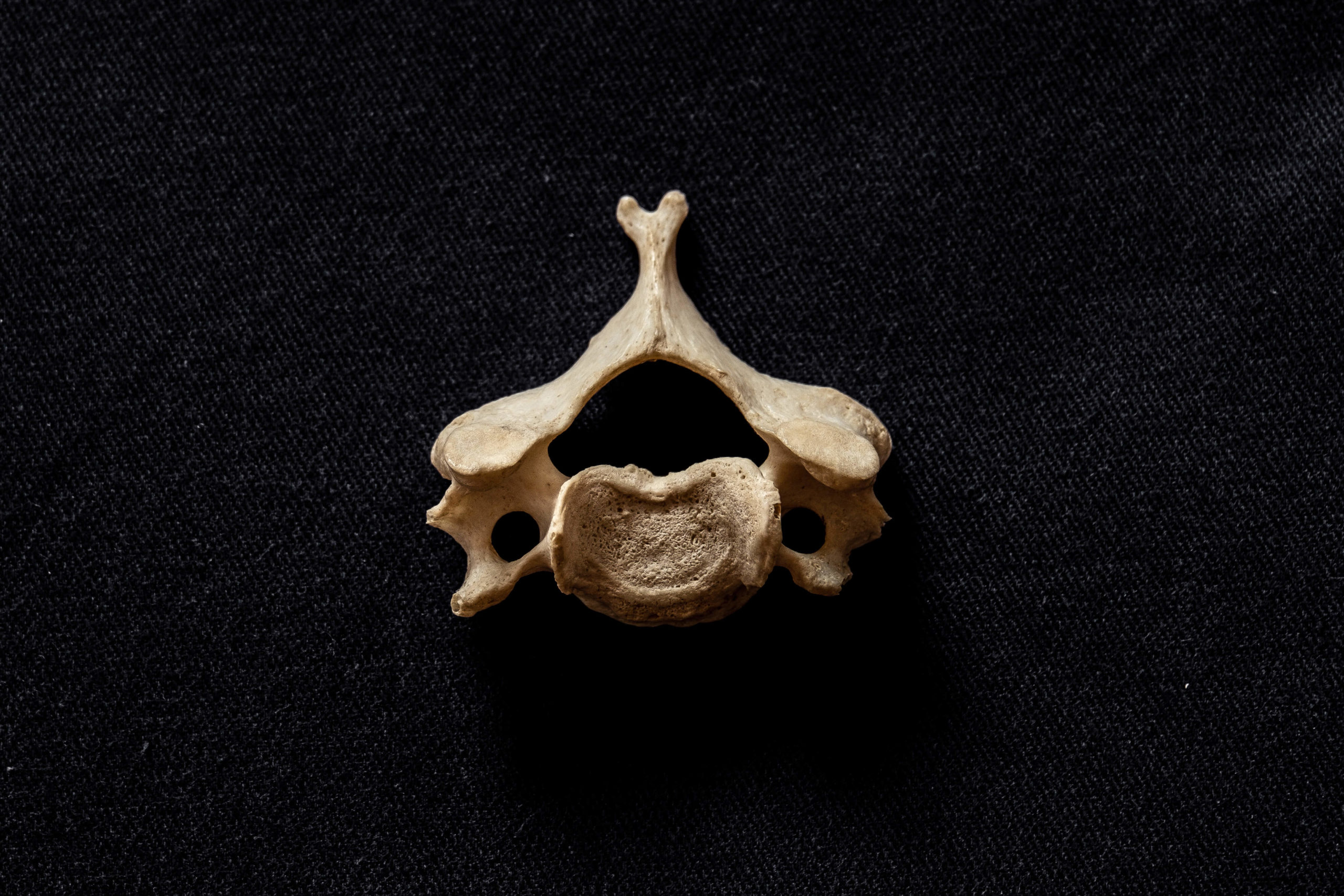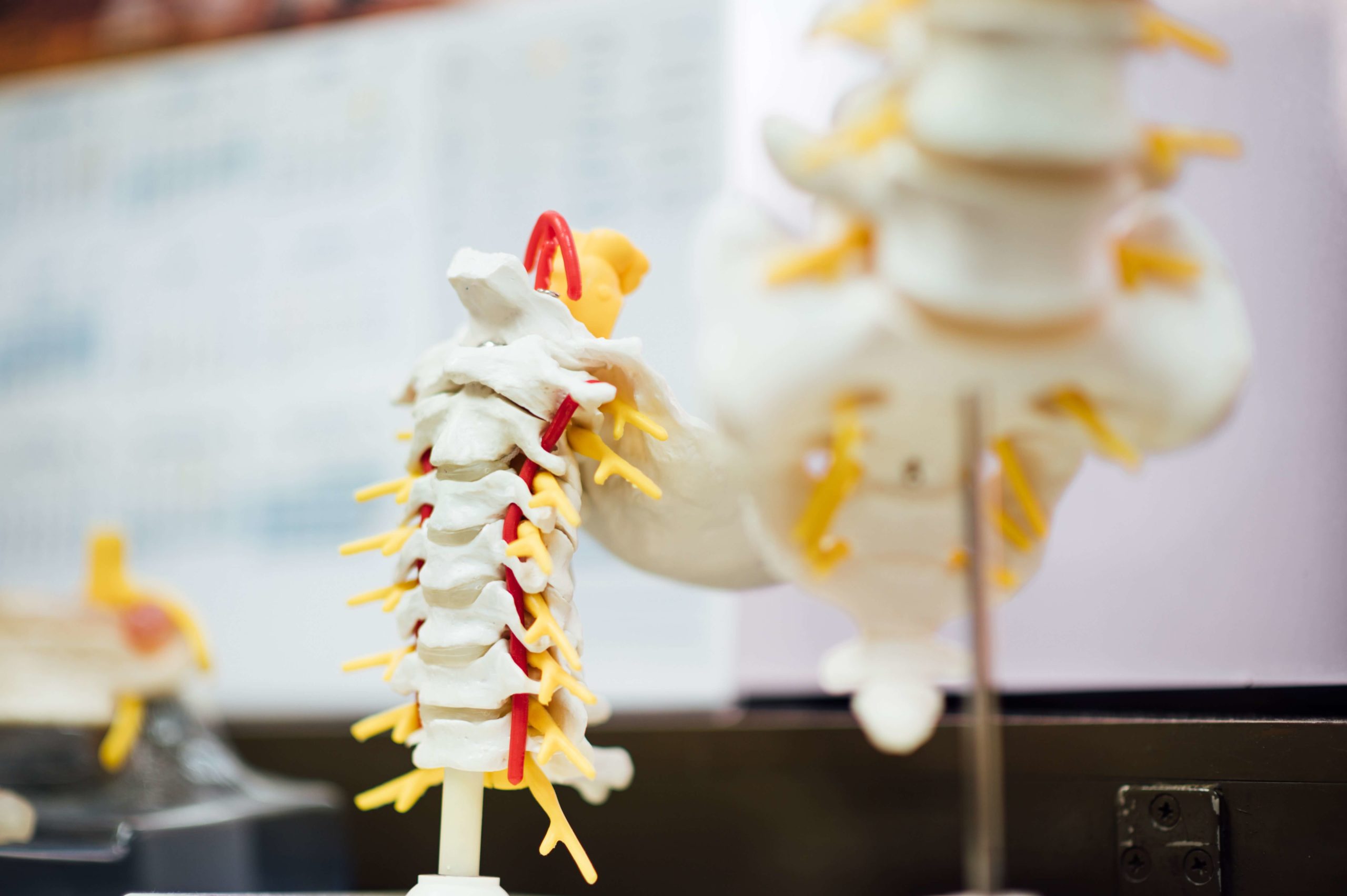
May 20, 2022 | Glossary
The Musculoskeletal System: A Glossary
The musculoskeletal system is made up of bones, cartilage, ligaments, tendons, and connective tissue...
Mon - Fri: 8:00 a.m. to 5:00 p.m
Lumbar herniated discs, and lower back pain caused by them, is a leading cause of pain among adults. This condition can often be incredibly debilitating, stopping sufferers from enjoying activities they used to love. Fortunately, there’s good news. Minimally invasive treatment for lumbar herniated disc allows sufferers to get pain relief with fewer risks and a shorter recovery time than traditional surgery.
In this article, we’ll be discussing lumbar herniated discs and the minimally invasive procedures Biscup Spine provides for this condition.
Your spine is made up of bones known as vertebrae, which are cushioned by spinal discs. To describe the makeup of spinal discs, it’s helpful to imagine them like a jelly doughnut. The outer part of the spinal disc is a tough outer layer called the annulus fibrosus. The annulus fibrosus surrounds the nucleus pulposus, which is like the jelly inside the doughnut. These spinal discs are located between each of the spinal column’s vertebrae, acting as shock absorbers for the stress placed on the spine during daily activities.
Lumbar herniated discs, which are sometimes called bulged, slipped, or ruptured discs, occur when a fragment of the nucleus is able to push through the annulus into the spinal canal. Herniated discs are usually in an early stage of degeneration. This is why these two conditions are known to develop together.
Your spinal canal has limited space, making it too narrow for spinal nerves and displaced herniated disc fragments. This displacement causes spinal discs to press on spinal nerves, causing mild to severe pain.
Herniated discs can occur in any part of the spine, but most commonly develop in the lumbar spine, the lower part of the back. Disc herniation usually occurs in this area of the spine because it takes on the majority of load when performing activities like sitting. The areas of your body where you feel painful symptoms depend on where the herniated disc is located. For example, a lumbar herniated disc will likely result in lower back pain and sciatica symptoms. Fortunately, minimally invasive procedures, which we’ll discuss next, are a very effective treatment for lumbar herniated disc.
Although disc herniation is a difficult condition to deal with, minimally invasive spine surgery (MISS) allows surgeons to treat patients with significantly less damage to their bodies. For patients, this means less pain, shorter hospital stays, and fewer risks of complications. Some other benefits of minimally invasive spine surgery include the following:
The following are options for minimally invasive treatment for lumbar herniated disc provided by Dr. Biscup.
Microdiscectomy involves the removal of the herniated portion of the disc to relieve pressure on the affected spinal nerve. Minimally invasive microdiscectomy only requires a half-inch incision. During this procedure, x-ray guidance is used to insert a circular retractor tube. Then, a microscope is used to remove the herniation and release the pressure on the nerve. The retractor is then removed and the incision is closed. Following the procedure, patients can often go home the same day or the next day and get complete or near-complete relief from their pain after their recovery period.
Spinal fusion is a well-known procedure used to treat herniated discs, but it’s less well known that minimally invasive spinal fusions can be performed. The goal of spinal fusion is to stabilize the vertebrae and remove pressure from affected spinal nerves. Minimally invasive fusions can be performed using just two small incisions in the patient’s back. This makes minimally invasive spinal fusion much easier on the patient than traditional fusion.
Lumbar discectomy, like microdiscectomy, involves the removal of the herniated part of the spinal disc. This eases pressure on the spinal cord and spinal nerves. There are a variety of methods for used to perform lumbar discectomy, but the benefits of minimally invasive discectomy are similar to those of microdiscectomy and spinal fusion. Smaller incisions are used to perform a procedure that will allow for faster recovery times, less time spent in the hospital, and less pain following the procedure.
Minimally invasive treatment for lumbar herniated disc has plenty of benefits and provides great outcomes for patients. Minimally invasive procedures also provide an overall easier recovery experience after surgery.
At Biscup Spine, we can help you determine which minimally invasive procedure will be most effective in treating your specific condition. Herniated discs may be a common problem, but every patient and the underlying causes of their pain is unique. This is why we tailor treatment to each patient.
In addition to this, Dr. Biscup is a pioneer in minimally invasive lumbar spine surgery. His specialization includes laser microsurgery and micro-decompression laminoplasty. He is also trusted to provide second opinions for patients considering surgery and treats many patients who have failed to get relief from previous surgical procedures.
If you’re currently living with lower back pain and are failing to get relief from your current treatment or have all but given up on finding relief, please don’t hesitate to call us at 1-800-533-7313 or contact us online today. Our goal is to deliver the best outcome possible for the relief of your back pain and we pride ourselves on our proven ability to do so. We look forward to partnering with you on your successful journey to better health!

The musculoskeletal system is made up of bones, cartilage, ligaments, tendons, and connective tissue...

Many of us don’t think twice about our spine, taking the flexibility and mobility it provides us w...

Improving your spine health starts with finding the doctor and practice that will provide you with a...
©2025 Biscup Spine. All Rights Reserved. | Privacy Policy | Support by ITCare